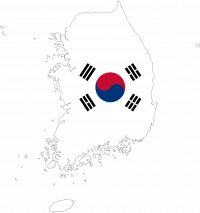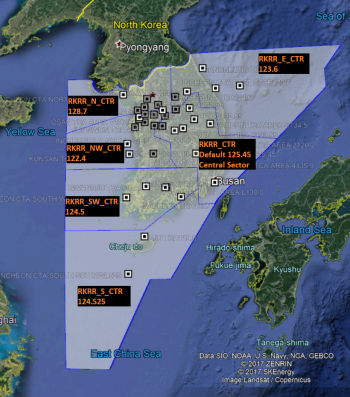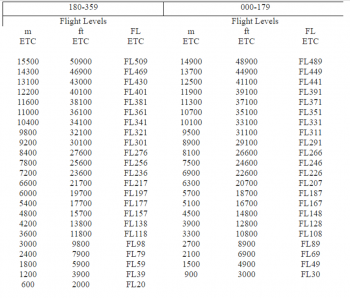RKRR Incheon FIR
안녕하세요 - Annyong Haseyo
Welcome to the RKRR Incheon Flight Information Region (FIR) wiki page for South Korea's airspace, part of the IVAO XE East Asia Region Division! These sets of pages should help provide you with all the information you need while controlling South Korean airspace.
Note: Please keep in mind, IVAO stresses that our network is at global peace without any conflicts between nations. We also strive to simulate realism. So, while it is ok to respect the prohibited airspace at the DMZ between the DPRK and ROK, on IVAO, direct flights are permissible between the two nations. At no time shall any war simulation be performed in Korean airspace as this is a huge violation against IVAO rules and regulations. That being said, enjoy Incheon Control
Contents
Sector File
Change Log:
- Created Sector File
Airspace Overview
Incheon Control
Here are a list of the valid center positions IVAO XE authorizes in South Korean airspace.
All radio callsigns are "INCHEON CONTROL" regardless of sector.
| Sector Position | Callsign | Frequency | Coverage Area |
|---|---|---|---|
| Incheon High Central | RKRR_CTR | 125.450 | Primary, High Sector above FL225 when other sectors online. Covers entire FIR when other sectors offline |
| Incheon North | RKRR_N_CTR | 128.700 | North Sector, Seoul TMA and airports as well as RKTI RKRN RKSG RKSO when APP's offline |
| Incheon Northwest | RKRR_NW_CTR | 122.400 | Northwest Sector, RKTP RKJK RKJU RKTU when APP's offline |
| Incheon Southwest | RKRR_SW_CTR | 124.500 | Southwest Sector, Pusan TMA and RKJB RKJJ RKJU RKPS when APP's offline as well as RKRR_S_CTR when offline |
| Incheon South | RKRR_S_CTR | 124.525 | South Sector, RKPC RKPD when APP's offline |
| Incheon East | RKRR_E_CTR | 123.600 | East Sector, RKNW RKNC RKNN RKNY RKND RKTL RKTH RKTN RKTY when APP's offline |
En Route and Cruise
RVSM Airspace
South Korea has RVSM airspace from FL290-FL410, and as such follows standard semi-circular rules in feet (FL).
360-179 odd flight levels (ex. FL290, FL310, FL230)
180-359 even flight levels (ex. FL300, FL240, FL380)
Transition Altitude
All of South Korea has a transition altitude of 14,000 feet and transition level of FL140.
South Korea uses QNH (standard 1013 hectopascals or millibars)
Transponder Codes
En route transponder codes range from 3200-3277
Arrivals into Chinese or Japanese airports will get a range of 7140-7177
Arrivals into South Korean airports will get a range of 5100-5377
Avoid using squawk codes beginning with 40xx, these are reserved for North Korea
China LOA and Meters
All handoffs to Chinese airspace will be given to Shanghai Control (ZSHA_CTR) on an airway at 2 waypoints and at a meters flight level to meet Chinese RVSM airspace requirements.
Traffic routed south will be on the A593 airway and a handoff shall be initiated by LAMEN.
Traffic routed north will be on the Y644 or Z55 airway and a handoff shall be initiated by AGAVO.
Exceptions between these two waypoints can be made at the waypoint IKADI (Chinese airspace) direct to PALSA or TOLIS (Korean airspace) to join the Y655 or aircraft inbound Jeju (RKPC) can be given the TOLIS 1T (runway 25) or TOLIS 1P (runway 07) arrival.
All aircraft entering Chinese airspace must be assigned a meters altitude by Incheon control prior to initiating a handoff to Shanghai or sent to UNICOM. Use the chart below to match the nearest meters level to the flight level they are cruising at or filed in Korean airspace. For example, if they are cruising at FL360, assigned 11,000 meters which will translate to FL361/36,100ft. When an aircraft enters Korean airspace from China, assign a cruise flight level nearest to their meters level as Chinese controllers normally do not assign a FL prior to handing off to Korean controllers.
Japan LOA
Per the Japan Airspace Safety Monitoring Agency, Japan has adapted RVSM airspace, the same as South Korean airspace. Handoffs are normally done at mandatory reporting waypoints on a mix of RNAV and high altitude airways to either Fukuoka Control (RJJJ_CTR) or Tokyo Control (RJTT_CTR). RJTT_CTR is the primary ATC position on IVAO, but if RJJJ_CTR is online, then all handoffs are made to them (Fukuoka).
ANDOL from the L512 RNAV airway
IGRAS from the Z56-B332 RNAV airway
LANAT from the Y6976-G597 airway
SAPRA from the Y685-G585 RNAV airway
KALEK from the Z84 RNAV airway
INVOK from PSN to join the G339 airway
APELA from PSN to join the A582 airway
BESNA from the Y781 one way airway eastbound to join the Y209 airway
SAMDO from the A595-Y677 RNAV airway
RUGMA from the Z85 RNAV airway or the A586-Y579 airway
ONIKU from the A593 airway
ATOTI from the Y711 one way RNAV airway soutbound or the B576 RNAV airway
If Incheon control prefers to give a direct, the direct points shall be to one of the above mention handoff points prior to entering Japanese airspace.
North Korea LOA
See ZKKP Pyongyang FIR for more information on North Korean airspace.
The Democratic People's Republic of Korea (DPRK, North Korea) and the Republic of Korea (ROK, South Korea) are at a friendly, peace state on IVAO per the rules and regulations R&R 1.3, as stated below:
1.3 - When simulating real world aviation in the IVAO environment, we will avoid, at any price, to simulate or to become involved in real world ethnical, political and religious conflicts and problems. We also will not allow the simulation of any form of aggression or war. IVAO is an entertaining and educational network where every world citizen, without any exception, is welcome to join the fun and pursue there virtual aviation experience
However, the IVAO XE Division will still respect the prohibited airspace from both RK and ZK covering the DMZ. Meaning, a controller can prohibit VFR flight through crossing the DMZ, but if a pilot requests to fly IFR direct from South Korea to North Korea with a route that will pass over the DMZ prohibited areas, traffic permitting, Incheon control can approve this to promote rule 1.3.
In the real world, flights sometimes do take place direct from RKSI to ZKPY. The realistic routes to be filed and flown are:
RKSI NOPIK Y697 GONAV Y644 AGAVO G597 DONVO A326 SANKO B332 TOMUK B332 PONIL W1 GK ZKPY
(Note, NOPIK used if RKSI is using 33L, 33R, or 34. Replace NOPIK With BINIL if 15L, 15R, and 16 are in use)
ZKPY BODOK B332 PONIL B332 TOMUK B332 SANKO A326 DONVO G597 AGAVO Y644 REBIT RKSI
For aircraft transitioning Pyongyang airspace, handoffs shall be made at or before KANSU from the Y233, B467-Y437, or B332-Z56 airways. North Korea has adapted RVSM airspace and flight levels can be used, however, meters are also sometimes used depending on the controller and pilot.
Direct handoffs can be made at MESOV to join the N513 or L771 airspace, if Pyongyang Control approves it.
All handoffs to Pyongyang will be given to ZKKP_CTR (Pyongyang Control). DMZ transitions must always be pre-coordinated with both Incheon and Pyongyang, if online.
At no time may war simulation, military exercises, or military aircraft may be done online per IVAO R&R 1.3 due to this politically sensitive area.
Standard Arrivals
RKSI Incheon Int'l
The following table are the STAR's to be assigned for aircraft arriving into RKSI Incheon International Airport in Seoul.
| Termination FIX | Runway 15L 15R | Runway 16 | Runway 33L 33R | Runway 34 |
|---|---|---|---|---|
| BIKSI | - | - | 1M | - |
| COWAY | - | - | 1A | 1A |
| CUN | - | - | 1M | - |
| GONAV | - | - | 2M | - |
| GUKDO | 1A | 1N | 1P | 1P |
| KARBU | 1A | 1N | 1P | 1P |
| MAKSA | - | - | 1M | - |
| OLMEN | 1N | 1N | 1P | 1P |
| REBIT | 1N | 1N | - | - |
| SEL | 1T | - | - | - |
Use the table below to help assigned a descend clearance.
| STAR | Waypoint | Altitude |
|---|---|---|
| GUKDO 1A KARBU 1A GUKDO 1N KARBU 1N OLMEN 1N |
SEL | FL150 |
| SEL 1T | DANZO | 10,000ft |
| REBIT 1N | ALTON | 13,000ft |
| CUN 1M | GUKDO | FL160 |
| BIKSI 1M | KARBU | FL180 |
| COWAY 1P COWAY 1A |
COWAY | FL150 |
| OLMEN 1P | ARONE | 12,000ft |
| GONAV 2M | DANIL | 12,000ft |
| MAKSA 1M | OLMEN | FL150 |
| GUKDO 1P | KAKSO | FL150 |
| KARBU 1P | SI857 | 12,000ft |
RKSS Gimpo Int'l
The following table are the STAR's to be assigned for aircraft arriving into RKSS Gimpo International Airport in Seoul.
| Termination FIX | Runway 14L 14R | Runway 32L 32R |
|---|---|---|
| COWAY | 1F | 1W |
| GUKDO | 1D | 1H |
| KARBU | 1D | 1H |
| OLMEN | 1D | 1H |
| REBIT | 1D | - |
| WIKEN | 2A | 2S |
RKSM Seoul Domestic
No STAR's available for RKSM Seoul Domestic airport. Coordinate with approach to route traffic to KAKSO at 8000ft and keep traffic away from RKSI and RKSS arrivals.
RKPK Pusan Gimhae International
18L 18R: GAYHA 2
36L 36R: DIMON 1, ZULBI 2
RKPU Pusan Ulsan
18: APARU 2D, LAPAL 2D 36: APARU 1R, APARU 8N, KPO 1R, KPO 8N
RKPC Jeju
| Runway 25 | Runway 07 |
|---|---|
| DOTOL 2T | DOTOL 2P |
| MAKET 2T | MAKET 2P |
| SOSDO 2T | SOSDO 2P |
| TAMNA 2T | TAMNA 2P |
| TOLIS 1T | TOLIS 1P |
| TOSAN 2T | TOSAN 2P |
Terminal Control Areas
Here is a list of the TCA's in RKRR FIR. Click on the link for more information regarding the TCA.
Civilian Aerodromes
- Chongju TCA - RKTU
- Gangneung TCA - RKNY
- Gimhae TCA - RKPK
- Gwangju TCA - RKJJ
- Haemi TCA - RKTZ
- Jeju TCA - RKPC
- Pohang TCA - RKTH
- Sacheon TCA - RKPS
- Seoul TCA - RKSI RKSS
- Wonju TCA - RKNW
Military/Joint Use
- Daegu TCA - RKTN
- Gunsan TCA - RKJK
- Jungwon TCA - RKTI
- Osan TCA - RKSO
- Seosan TCA - RKTP
- Yecheon TCA - RKTY
| Identifier | Name | Frequency |
|---|---|---|
| CHJ | Chongju | 110.5 |
| CHO | Chongju | 109.0 |
| CJU | Jeju | 116.1 |
| CUN | Yecheon | 114.8 |
| DOC | Daegu | 116.5 |
| HGS | Wonju | 110.2 |
| KAE | Kangwon | 115.6 |
| KAN | Kangnung | 111.9 |
| KIP | Gimpo | 113.6 |
| KMH | Gimhae | 113.8 |
| KOG | Kangung | 113.5 |
| KPO | Pohang | 112.5 |
| KSM | Seoul AB | 109.8 |
| KUZ | Gunsan | 112.8 |
| KWA | Kwangju | 114.4 |
| KWJ | Kwangju | 114.1 |
| MKP | Mokpo | 111.2 |
| MUN | Muan | 111.0 |
| NCN | Incheon | 113.8 |
| PSN | Pusan | 114.0 |
| SAC | Sacheon | 115.1 |
| SCN | Sacheon | 110.0 |
| SEL | Anyang | 115.5 |
| SOL | Seoul AB | 111.2 |
| SOT | Songtan | 116.9 |
| SWN | Suwon | 109.2 |
| TAG | Taegu | 117.8 |
| TGU | Dalseong | 112.2 |
| UJN | Uljin | 115.3 |
| USN | Olsan | 111.4 |
| WNG | Seoul Incheon | 112.9 |
| YAG | Yangyang | 110.6 |
| YCN | Yecheon | 108.9 |
| YDM | Yongdam | 109.0 |
| YJU | Yangju | 114.9 |
| YSU | Yeosu | 115.7 |


